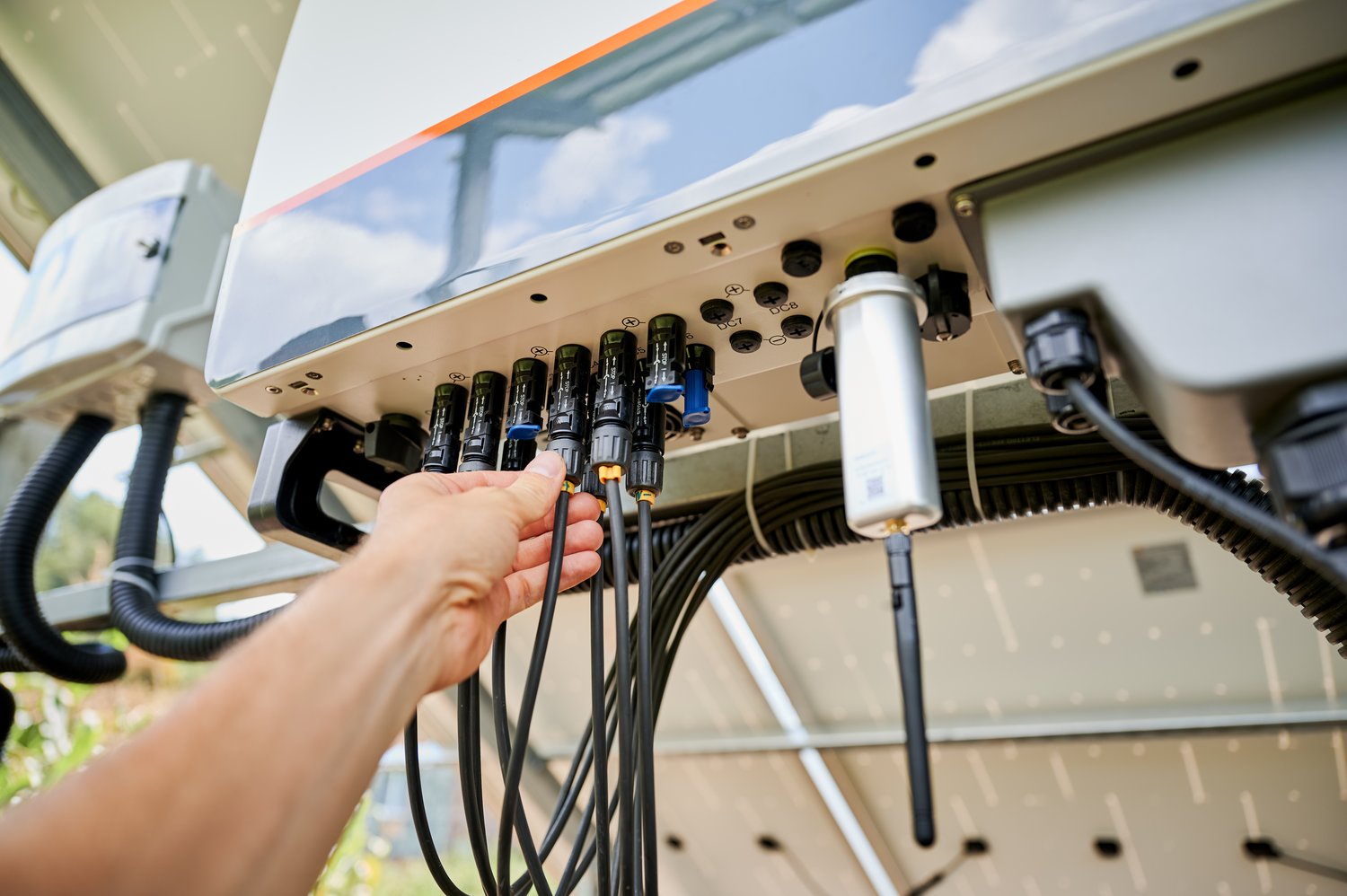Understanding photovoltaic inverters
Photovoltaic inverters are essential components in solar energy systems. These devices convert direct current (DC) from solar panels into alternating current (AC) for use in homes and businesses. The global market for photovoltaic inverters is expected to reach $9.43 billion by 2026. Inverters come in various sizes and types, with efficiencies ranging from 95% to 98%. [Photovoltaic inverters] https://onninen.pl/en/products/Photovoltaic-and-energy-storage-systems/Photovoltaic-inverters play a crucial role in maximizing energy production and system performance.
There are two main types of inverters: string inverters and microinverters. String inverters are typically used for larger installations, while microinverters are ideal for smaller systems. The choice between these types depends on factors such as system size, shading conditions, and budget. Modern inverters often include features like monitoring capabilities and power optimizers. These features help improve system efficiency and provide real-time data on energy production.
When selecting an inverter, consider its warranty, which typically ranges from 5 to 25 years. The lifespan of a quality inverter is usually 10 to 15 years. It’s important to choose an inverter with a power rating that matches your solar panel system. Oversizing or undersizing can lead to reduced efficiency and potential damage to the equipment. Regular maintenance of inverters, including cleaning and firmware updates, can significantly extend their lifespan.
Choosing between 1 phase and 3 phase inverters
The decision between 1 phase and 3 phase inverters depends on your electrical system and energy needs. 1 phase inverters are commonly used in residential settings with single-phase power supply. These inverters are suitable for smaller solar installations, typically up to 5 kW. [1 phase inverters] https://onninen.pl/en/products/Photovoltaic-and-energy-storage-systems/Photovoltaic-inverters/1-phase-inverters are generally more affordable and easier to install than their 3 phase counterparts.
3 phase inverters are ideal for larger commercial or industrial installations. They can handle higher power outputs, typically above 5 kW. These inverters distribute power more evenly across three phases, resulting in improved efficiency and stability. [3 phase inverters] https://onninen.pl/en/products/Photovoltaic-and-energy-storage-systems/Photovoltaic-inverters/3-phase-inverters are particularly beneficial for businesses with three-phase power supply. They offer better load balancing and can handle higher voltages.
When choosing between 1 phase and 3 phase inverters, consider your current and future energy needs. If you anticipate expanding your solar system, a 3 phase inverter might be a better long-term investment. Consult with a qualified electrician to determine the most suitable option for your specific situation. Remember that the inverter type must match your existing electrical infrastructure to ensure optimal performance and safety.
Integrating inverters with energy storage systems
Integrating inverters with energy storage systems enhances the versatility and efficiency of solar installations. Battery storage allows excess energy produced during the day to be used during nighttime or low-production periods. Modern hybrid inverters can manage both solar panels and battery systems, simplifying the overall setup. These integrated systems can increase self-consumption of solar energy by up to 80%.
When selecting a storage system, consider factors like battery capacity, depth of discharge, and cycle life. Lithium-ion batteries are popular due to their high efficiency and long lifespan, typically lasting 10-15 years. The average home energy storage system ranges from 4 kWh to 13 kWh in capacity. Proper sizing of both the inverter and battery is crucial for optimal performance and longevity of the system.
[Photovoltaic and energy storage systems] https://onninen.pl/en/products/Photovoltaic-and-energy-storage-systems offer numerous benefits, including increased energy independence and potential cost savings. These systems can provide backup power during grid outages, enhancing reliability. Smart energy management features in modern inverters allow for efficient use of stored energy based on consumption patterns and electricity prices. Regular maintenance and software updates ensure the longevity and optimal performance of integrated photovoltaic and storage systems.





